Museums
A big legacy, no bones about it
September 15, 2014
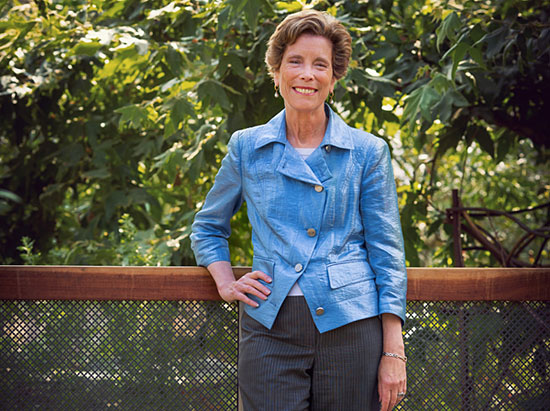
Pisano in the county museum's nature gardens, where she loves to walk. "The big bonus is those gardens used to be parking lots," she says. Photo/Christina Gandolfo
Over the past 13 years, Jane Pisano has presided over a dramatic transformation of the county’s venerable Natural History Museum.
Huge emblems of her accomplishments are visible all over the museum, from the striking glass entry pavilion featuring a suspended 65-foot fin whale to the trio of fearsome young T. rexes showcased in the new Dinosaur Hall.
But those show-stoppers don’t tell the whole story of the NHM as reimagined on Pisano’s watch.
With her recent announcement that she will be retiring from her post once a successor is named, it’s time to take a spin through some of the exhibits and artifacts—large and small—that have meant the most to Pisano over the years.
Here are a few of her favorite things—from a buzzed about “hotel” in the museum’s gardens to a stained glass window with a trans-generational backstory.
A really big sea lion
“There are parts of this museum that I just love because my grandchildren love ‘em,” Pisano says—like the dioramas. “My favorite is an enormous sea lion that is in the North American Mammal Hall and I’ve never seen one as big in nature but he looks like he could be almost anywhere on the California coast, preening and proud and clearly the biggest one around. I love the California coast so this one has special appeal to me.”
All that glitters
“I love the gold exhibit in the Gem Hall because it tells this wonderful story of California gold and the Gold Rush. You can kind of lose yourself in the abundance of it. And the story is so compelling. Almost all that gold, if not all of it, comes from California mines.”
The case of the pregnant plesiosaur
This fossil, between 72 million and 78 million years old and now residing in the museum’s Dinosaur Hall, “encapsulates in one object all of the things that we do here,” Pisano says. Not only does the fossil showcase groundbreaking findings by museum scientists but it also comes with some gee-whiz factoids. (Who knew that newborn plesiosaurs came into the world at 40% of the mother’s size?)
A whale of an early mammal
This 52-million-year-old Pakicetus skeleton in the Age of Mammals exhibit, which is seen on the left above, is—believe it or not—“a close relative of the modern whale,” Pisano says. The creature probably spent a lot of its time in the water, like the hippo. “It really shows that the early mammals, after the age of dinosaurs, adapted in search of food.”
The bee hotel
“I love, love walking in the garden and one of my favorite places to check is the Bee Hotel. You think you know about nature because it’s all around us, but when you go to the nature gardens, you just look and you see in a new and different way.”
Grandson to the rescue
When the 101-year-old museum was undergoing renovation, the stained glass window that crowns the Haaga Family Rotunda was showing signs of its age. “We built a platform there, and the grandson of the guy who designed and installed that window came and cleaned it and fixed it, reconnected it in places where gravity was really jeopardizing the glass. I never look at that without thinking about the whole process of saving it and preserving it.”
Where kids turn into scientists
“I love everything in the Nature Lab. One of my very favorite things is to walk through the Nature Lab in the middle of the day and see the children gathered around the table where our scientists are working, engaged and interested and asking questions about what they’re doing. I love that.”
Posted 9/15/14
Rhapsody in blue
September 10, 2014
It was the kind of discovery that can rock a gem scientist’s world.
Eloïse Gaillou, an associate curator at the Los Angeles County Natural History Museum, started picking up social media chatter early this year about a 29.6 carat rough diamond found in South Africa.
She hardly imagined that just months later she would be on a team at the Smithsonian Institution conducting scientific tests on the rare diamond—now exquisitely cut to 12 carats and dubbed the Blue Moon for its exceptional color—let alone helping to host the super-stone’s visit to Los Angeles, where it will be on display in the museum’s gem vault from September 13 through January 6.
“We tweeted about it, we blogged about it, never thinking that it would come to us eventually,” Gaillou said.
The Blue Moon will join a collection of 240 colored diamonds called the “Aurora Butterfly of Peace” now on display at the museum.
“Putting those two collections together is really going to be an exceptional thing for the public to see. You won’t be able to see that many colored diamonds again in your life,” Gaillou said. “I’m sure we’re going to blow people’s minds.”
The idea for the temporary exhibition was launched, she said, after the owner of the Butterfly of Peace diamonds put her in touch with Cora International, the diamond firm that owns the Blue Moon. Cora International agreed to allow the museum to display the rare stone, whose distinctive color comes from traces of boron within its carbon structure.
It is likely to be the only public display of the diamond before it disappears discreetly into a private collection, Gaillou said.
Gaillou, who grew up in the Brittany region of France, has childhood memories of prospecting for fossils and minerals in local fields and on vacations with her parents in the Alps. As a geologist specializing in gemstones, she focused on sapphires for her master’s degree and opals for her doctorate, but became interested in diamonds when she pursued a diploma in gemology. It was at the Smithsonian, where she did nearly five years of post-doctoral work before joining the county’s Natural History Museum in 2012, that she began to turn her attention to rare pink and blue diamonds—“the ones that you don’t usually have the opportunity to study unless you are in a very special place that owns such diamonds.”
Even without glamorous visitors like the Blue Moon and the Butterfly of Peace passing through, Gaillou said the NHM’s gem collection is “amazing,” second only to the Smithsonian’s.
While she got a thrill from handling the Blue Moon during the scientific tests with her former colleagues at the Smithsonian last month, it’s clear that science—not jewelry—is this curator’s best friend.
She was most wowed by the Blue Moon’s red afterglow—“a good 20 seconds!”—after it was exposed to UV light. That kind of phosphorescence, she said, is usually associated only with the finest blue diamonds, like the Hope and the Wittelsbach-Graff.
“Diamonds, they’re pretty, don’t get me wrong. But from a scientific point of view, I just love studying diamonds. They give us a clue not only about the deep earth, but also the evolution of the earth from about 3 billion years ago until now,” she said. “You would be done looking at a diamond in about five minutes if you were just looking at its aesthetics. But from the scientific point of view, I have been working on them for over seven years now.”
Still, like a pastry chef who steers clear of macarons, Gaillou said she doesn’t indulge much in sparkling bijoux in her private life.
“I see so many beautiful things that I don’t even buy jewelry myself, or not much. I think it has probably killed it for me,” she laughed.
But she does get a charge out of walking through the museum’s gem exhibits on the way to her office each day, and overhearing the oohs and aahs from visitors.
She’s expecting to get quite an earful in the months ahead. Even though she has studied more than 100 diamonds, including legendary stones like the Hope, the Wittelsbach-Graff and the Blue Heart, she considers the Blue Moon exceptional.
“You never get tired of looking at big gems like that,” said Gaillou, 34. “There’s just something about this color. It’s something that you will never forget.”
“Some gemstones are just dead, and some gemstones are just alive. And definitely this one is alive. You see it. It’s just aglow. The cut is wonderful, the fire is amazing. After that, as to the personality of the Blue Moon, I think that everybody will have a different answer. You just have to come and see the diamond by yourself and make up your mind on that.”
Posted 9/4/14
New LACMA design spans Wilshire
July 3, 2014
Two Los Angeles County museums’ unique but conflicting visions for the future were enough to send an internationally renowned architect back to the drawing board—literally. Now, after a collaborative process that included exploring the grounds of the La Brea Tar Pits with scientists, architect Peter Zumthor is back with a bold new approach for a signature building at the Los Angeles County Museum of Art that avoids the famed Ice Age fossil trove and instead creates a dramatic bridge across Wilshire Boulevard.
Zumthor’s new design for the most part preserves his original concept: a largely transparent building with a shape reminiscent of a curvaceous tar pit. But instead of constructing the entire 400,000-square-foot building on the Hancock Park campus that LACMA shares with the tar pits, he now proposes having one quarter of the structure reach south across Wilshire to what’s currently the museum’s Spaulding Avenue parking lot. One of the new building’s five distinctive glass pavilions—through which passersby will be able to see the museum’s art—would now be located on the south side of the boulevard.
A model of Zumthor’s original plan for the building was displayed last spring as part of a LACMA exhibit intended to inspire public conversation about the project. But Topic No. 1 in that conversation quickly became Natural History Museum officials’ concern that the proposed structure could obstruct future scientific discoveries hidden in the rich subterranean world of micro-fossils.
In the face of such worries, officials of both museums appeared before the Board of Supervisors last September and pledged to work together to preserve the tar pits while creating a new building that would replace several aging structures on the LACMA campus.
The current design, which still must obtain a range of environmental and governmental approvals in order to go forward, grew out of that process.
“Necessity is the mother of invention,” said Supervisor Zev Yaroslavsky, who has directed county funding to a feasibility study of the project that is now underway. The new design “is actually more iconic than his original design. It’s a win-win.”
“We think the design is much better,” agreed Michael Govan, LACMA’s director and CEO. He said the new approach opens up more park space around the tar pits, creates better vistas on a “continuous veranda” around the building and makes a more compelling visual statement by bridging Wilshire.
“It really becomes a landmark,” Govan said.
Zumthor had originally intended the design to be a “love letter to the tar pits,” but as criticism emerged about its possible negative impact on science at the site, he “joked that the tar pits didn’t love it back,” Govan said.
Well, that loving feeling appears to have returned.
“I think the results show that we all worked in good faith to both provide LACMA with an exciting building and to protect and preserve the tar pits,” said NHM director and president Jane Pisano, who walked the site with Zumthor and her team of scientists in February. “It was a chance to really talk to the person who had the challenge of coming up with the solution. I have to say, I was just very impressed by what a good listener he is.”
Museum officials have previously said that it will take a $650 million campaign to bankroll all elements of creating the new building. An updated figure, taking into account a potentially more complicated construction process, will not be available until the feasibility study is completed in the spring.
Meanwhile, though, the collaboration between the two county museums already is paying dividends.
“I personally have had a lot of fun getting to know in more depth the science of the La Brea Tar Pits,” Govan said.
As for Pisano, she said she always felt a good solution eventually would emerge.
“One of the things that I knew for sure was that architects, particularly good architects, thrive when they’re given very difficult design challenges,” Pisano said. “And I think that both the thriving and the design challenges were present in this case.”
Posted 6/24/14
L.A.’s story comes to life
July 10, 2013
Los Angeles is young compared to most American cities. It incorporated in 1850, the same year Levi Strauss began manufacturing jeans. But no one can accuse the nation’s second-largest metropolis of being uneventful, and this weekend, a new permanent exhibit at the Natural History Museum of Los Angeles County will begin counting the reasons.
From missions to movies, ranchos to railroads, “Becoming Los Angeles”—a show almost as sprawling as its subject—will take visitors through 500 years of local evolution, tracing the environmental and cultural shifts that turned Southern California into a 21st century global hub.
The 14,000-square-foot exhibition, which opens to the public on Sunday, will not only be the museum’s largest, but will serve as the finale to a decade-long overhaul of the museum, which celebrates its centennial this year.
“We’re looking at Los Angeles history through the lens of how people and the environment have interacted,” says Margaret Hardin, division chief for anthropology and history at the museum. “That’s our overarching narrative.”
Some of the stories are well known—how water from the Owens Valley allowed Los Angeles to grow in the early 1900s, for example. But others are less-told tales, such as the story of the night a surging L.A. River jumped its banks and changed course, or the tale of the grasshopper plague that helped set the stage for the region’s transformation from agriculture to industry.
Tying the narrative together is a swooping steel architectural canopy that touches down at pivotal points in the history of the region. Underneath, four galleries of cultural artifacts give life to the story: the Mission San Gabriel cross, a stuffed grizzly bear, the antique writing desk of California’s last Mexican governor, the headlight of a Southern Pacific locomotive, a souvenir bottle of water from the 1913 opening of the Aqueduct, Charlie Chaplin’s “Little Tramp” costume, the workstation where Mickey Mouse was born.
Sprinkled throughout are interactive multi-media installations. A scale model of downtown L.A. in the 1930s, for instance, lets visitors time travel through the centuries in ten neighborhoods. A bench near the display on the mission era plays a snippet of devotional music when visitors sit in it.
Another interactive exhibit explains the environmental change that turned the Los Angeles region into an annual fire hazard, where invasive, non-native species edged out native, perennial grasses—a process accelerated through “cow poop,” in the words of the museum. This particular display is aimed at one of the museum’s most faithful audiences—little boys.
“We really had a great time,” says Hardin. “There are all these small delights.”

The Natural History Museum's new exhibit on Los Angeles includes four galleries of cultural artifacts.
Posted 7/10/13
L.A.’s biggest science project ever
June 13, 2013
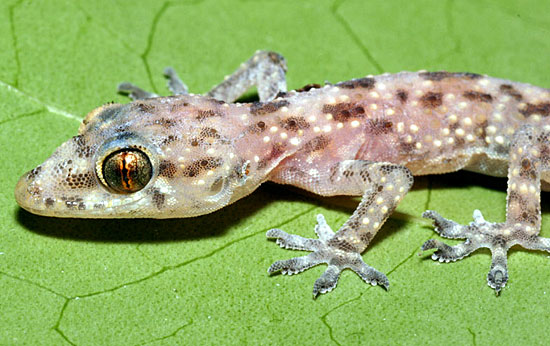
Natural History Museum “citizen science” yielded the first L.A. sighting of this gecko species. Photo/Gary Nafis
When the Natural History Museum of Los Angeles County launched its recent renovation, one of the goals was to make room for more science. Turns out it also made room for more scientists—of the backyard amateur variety, no lab coat required.
With the addition of the new Nature Lab and Nature Gardens as part of its centennial celebration, the museum’s growing involvement in so-called “citizen science” projects has gained new prominence, enlisting Southern Californians by the thousands in projects to catalogue the region’s biodiversity.
From insect counts to inventories of freeway roadkill, the museum has more than a dozen initiatives that are either ongoing or in the works now in which the public is playing a key role in the study of wildlife in Los Angeles County.
“It’s like crowdsourcing, and it can be an amazing resource,” says Lila Higgins, manager of citizen science and live animals at the museum.
Also known as participatory science, citizen science has become increasingly common as technology has made it easier for scientists, professional and amateur, to share observations and collaborate.
“In some ways, it isn’t new,” says Greg Pauly, curator of herpetology at the Natural History Museum, noting that volunteers at the NHM’s Page Museum have been helping process fossils for many years. “But with the Internet and smart phones and other digital devices, anyone can, say, photograph an organism and send it over the net to be included in scientific research. And people of all ages can help that way.”
Worldwide projects, such as the extraterrestrial life site SETI@Home, and the ornithology database eBird, have been reaching out to the public for more than a decade, and the Natural History Museum has been among the local pioneers of the concept. As far back as 1994, for instance, museum ornithologists enlisted the public in a study of feral parrots in Southern California.
The California Parrot Project, which is still ongoing, asked birdwatchers to let the study’s organizers know about local parrot sightings, and eventually yielded one of the first reliable counts of the numbers—upwards of a dozen species—of parrots breeding in the wild here, says Kimball L. Garrett, ornithology collections manager at the museum.
“It was extremely primitive—we’d mail out newsletters,” says Garrett. “But all this research from the mid-1990s gave us a baseline to figure out whether these populations are expanding or contracting now.”
Of the museum’s current batch of citizen science projects, the oldest is the 11-year-old Spider Survey, which asks the public to collect spiders in their homes and gardens, take down some data and bring or send what they find to the museum, Higgins says.
“At the time, it was the cutting-edge thing,” she remembers. “We launched it in 2002 at the museum’s Bug Fair, and the first week, a thousand spiders came in.”
Since then, some 6,000 spiders have been sent into the museum from throughout Los Angeles County; among the project’s findings was the first sighting of a brown widow spider in L.A.
“We’re a port city with people and goods coming and going on a daily basis, and with them, creatures sometimes hitch a ride,” Higgins explains.
Other citizen science projects have yielded even more exciting data. In 2010, Will and Reese Bernstein, a father and son from Porter Ranch, submitted a photo of a tiny reptile they’d seen at a backyard dinner party to the museum’s Lost Lizards of Los Angeles project. The critter turned out to be the first documented discovery of a Mediterranean House Gecko in L.A.
Although the non-native gecko (also known as Hemidactylus turcicus) has been spotted in the southeast United States, the L.A. sighting was so significant that the Herpetological Review plans to publish the finding this fall, says Pauly: “So Reese Bernstein, who is 12 years old now, will already have published a paper in a scientific journal.”
In April, the Lost Lizards project turned up yet another out-of-state reptile, an Indo-Pacific Gecko that was found in a backyard in Torrance. The project has been so successful, in fact, that it’s being expanded to include amphibians.
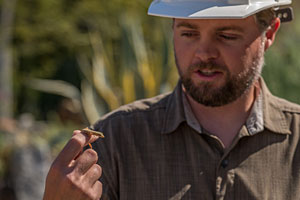
Greg Pauly’s Lost Lizards of Los Angeles project worked so well that it’s expanding. Photo/SoCal Wild
“Maybe you see a turtle at the park, or an alligator lizard in your yard, or maybe a salamander in the Santa Monica Mountains,” says Pauly. “You submit a photograph of it to our project, and that data will be available to scientists for generations to come.”
Coming up will be the citizen science component of Bioscan, a 3-year look at, among other things, the diversity of Los Angeles insects. Project Coordinator Dean Pentcheff is looking for a homeowners willing to host bug traps in their backyards and volunteers willing to sift through the take, sorting beetles from butterflies. A special side project in August will count bugs drawn to porchlights.
“We’re about three months in,” says Pentcheff, “and already we’ve found new species unknown to science.”
Pauly, the herpetologist, says such projects are especially important in places like Los Angeles County because the interface between the wilderness and the expanding urban landscape is on the cutting-edge of science these days.
“When you ask people here where they go to see nature, they say things like, ‘Sequoia’ or ‘Anza Borrego.’ But we’re surrounded by incredible diversity, and you don’t even have to leave L.A.”
Posted 6/13/13
Historic bash for Natural History Museum
May 30, 2013
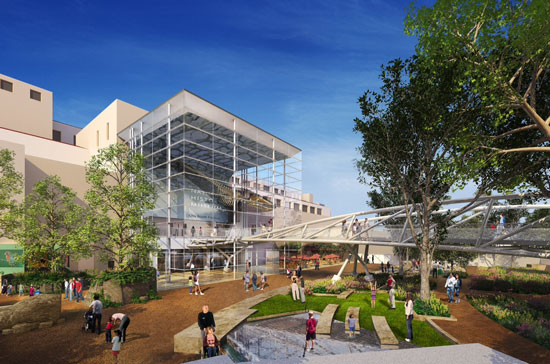
An artist's rendering of the Natural History Museum's new entry, with a fin whale skeleton suspended above.
Los Angeles was a hard-partying hick town when top-hatted civic leaders opened its first museum, toasting it with water from the then-day-old Los Angeles Aqueduct. The fairground where the new landmark stood had been a nest of saloons and gamblers. L.A. was so culturally young that, for its first acquisition, the museum touted a goldfinch nest from the San Gabriel River bottom.
But a century can make such a difference.
On June 9, the Natural History Museum of Los Angeles County will kick off its centennial with a day and night of hoopla in the rowdy ex-fairground that is now called Exposition Park. The festivities—with kid-friendly activities, food trucks, garden tours, live music, scientists and a nighttime concert by DEVO—will not only honor one of the nation’s largest and best-known natural history museums, but also will mark a milestone in the decade-long renovation and restoration.
The museum’s hallmark 65-foot fin whale will welcome guests from the top of a dramatic new glass entrance. Two Expo Line Metro stops will ferry visitors who prefer to arrive via L.A.’s burgeoning mass transit system.
A 3.5-acre Nature Garden will blossom outside a companion, state-of-the-art Nature Lab, where visitors can study wildlife, see it in action and then collaborate with science lovers region-wide in crowdsourced “citizen science” projects. Nearby, the museum’s acclaimed new Dinosaur Hall and award-winning Age of Mammals exhibits, both already opened, will be joined in July with the unveiling of the renovation’s final piece, “Becoming Los Angeles,” a permanent installation on the development of Southern California.
Meanwhile, visitors will be able to get a local history fix in the halls and rotunda of the 1913 building, which is on the National Register of Historic Places, and which has been restored and seismically strengthened.
“If you haven’t visited the Natural History Museum in a while, you should be prepared to find a vastly different institution,” says President and Director Jane Pisano. “This is a museum that has transformed itself.”
Pisano says the remodel arose from a change of philosophy at the museum.
“The old philosophy was very typical of natural history museums everywhere,” she says. “It was all about us—how we do research, how we take care of collections—and we changed that mission to focus on the visitor.”
The new aim, she says, is not to be “a book on a wall,” but to inspire wonder and a sense of discovery and responsibility in those who come to the museum. “We were doing a good job on wonder, but not so well on discovery and least well on inspiring a sense of responsibility for the natural world.”
Nor, she says, was the museum working as well as it could with Southern California’s natural landscape.
“There are very few cities that have the kind of climate we have,” she noted. So with the help of a new, county-funded garage that has consolidated parking, acres of paved land were transformed into wildlife habitat and gardens. Meanwhile, the building’s grand architecture was tweaked to create an easier flow between indoor and outdoor wonders.
Now visitors can take in the museum’s longstanding highlights—the dinosaur bones, the marine fossils—but also enjoy workshops led by master gardeners in the edible garden and unleash their kids in a “Get Dirty Zone.” The remodel also has set the stage for a long-term “citizen science” study of local biodiversity that museum experts expect to stretch throughout the Los Angeles Basin.
“This is a place where living things will come in and we can appreciate them in the wild,” says Karen Wise, the museum’s vice president of education and exhibits. “We don’t have to just have dead things on display.”
The new Natural History Museum isn’t the only cultural institution in Southern California to be reimagining the museum experience ways that are more authentic to L.A. The Los Angeles County Museum of Art under Director Michael Govan also has taken a more indoor-outdoor approach with installations such as Michael Heizer’s “Levitated Mass” and Chris Burden’s “Urban Light” on its campus. In fact, on the same day as the Natural History Museum celebration, LACMA will unveil a proposed architectural remodel that would make the county’s 50-year-old art museum literally transparent to visitors.
“I love letting the light in,” says Pisano. “I think it changes everything about the museum. I love that it’s fun, and I love that it has become a destination where visitors of all ages can come and spend the day and still not see it all.”
And, she says, there’ll be more to love as the next century gets underway at the museum. Pisano says the renovation has upgraded about 60 percent of the public space on the campus, with plenty of projects on the horizon.
“We need to redo the auditorium,” she says. “There still are exhibit galleries that need to be re-presented. We need to redo our Gem and Mineral Hall. We’ve talked about a Hall of the Americas for a long time.
“There’s a lot to be done,” says the museum director, “but I’m so optimistic about the future of this place.”
Posted 5/29/13
LACMA lights up
May 30, 2013
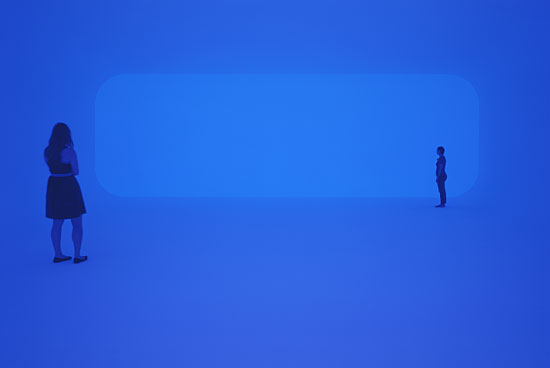
James Turrell's stunnng "Breathing Light" is part his new LACMA retrospective. Photos by Florian Holzherr
When Denver art dealer Adam Gildar heard about the James Turrell retrospective at the Los Angeles County Museum of Art, he went straight to the museum’s website for advance tickets to the widely anticipated show. Bound for L.A. with some collectors during the July 4 weekend, Gildar was particularly hoping to see “Light Reignfall,” a mind-blowing, one-person-at-a-time Turrell light show in a spherical tank that looks like something out of a sci-fi movie.
Unfortunately for him, so, apparently, is just about everyone else.
The Turrell show—packed since its opening last week, with “Light Reignfall” reservations sold out until late August—is shaping up to be one of this summer’s hottest tickets, and not just at LACMA.
On June 9, the Museum of Fine Arts, Houston, will showcase a cross-section of large and small works from its collection by the pioneering, Los Angeles-born artist. In New York, starting June 21, the rotunda of the Guggenheim Museum will be turned into a gigantic Turrell light piece.
Over on La Brea Boulevard, Turrell’s gallery, Kayne Griffin Cocoran, last week opened a new space designed by the artist, with a show tracing the 37-year history of his still-incomplete magnum opus, “Roden Crater.” The new gallery also has a signature Turrell “skyspace,” a part-skylight, part-lightshow creation that has become the new must-have architectural feature for art lovers. More than 80 have been installed worldwide, mostly for private collectors, including at least a half-dozen in homes and galleries in Los Angeles County.
“It is sort of a festival of James Turrell,” says LACMA Director Michael Govan, who co-curated the LACMA show and whose relationship with the white-bearded artist dates back to Govan’s last job at the Dia Art Foundation in New York.
And, Govan adds, the festival will be a long-running one.
Turrell’s medium is light, colored and natural, manipulated in ways that are designed to engulf and disorient the viewer. But because many of his artworks are built so that only a limited number of people can experience them at once, LACMA is expecting crowds to move much more slowly than usual through the exhibition.
“Tickets to that show are like Stones tickets,” an artist’s liaison for a large L.A. gallery confided earlier this week. “Everybody wants in.”
As a result, the museum is selling timed tickets, both to the retrospective and to high-demand pieces such as “Light Reignfall,” and extending the show for almost a year so that anyone who wants to can eventually see it. The exhibit also will stay open until 11 p.m. on Fridays from July 5 to August 30 as part of extended summer hours at LACMA’s Resnick Pavilion and the Broad Contemporary Art Museum.
For some, the thrill is in seeing the artist’s work on its home turf. Now 70, Turrell pioneered Southern California’s Light and Space Movement and made his name in L.A.
Others are looking forward to literally immersing themselves in the pieces.
At a press preview this week, a woman—helped by a pair of attendants in white lab coats—emerged from “Light Reignfall” dazed and comparing the experience to the aura from a somehow-painless migraine. Meanwhile, crowds of donors and arts writers stood in line for up to an hour for a chance to take off their shoes and climb a black-carpeted pyramid into “Breathing Light,” a 5,000-square-foot installation that creates the sensation of being suspended in a fog of luminosity.
Still others are curious about “Roden Crater,” the massive installation and “naked-eye observatory” that Turrell has been building for decades in a volcanic crater near Flagstaff, Az.
“There was a time when I was kind of worried about my career, like many mid-career artists, and thinking maybe I was going nowhere,” the artist chuckled at Wednesday’s press conference. “Now if you find yourself in the middle of nowhere, you’re probably somewhat near my work.”
Turrell jokingly compared the crater installation to an unfinished doctoral thesis, and kidded that he was raising money for its completion by “selling blue sky and colored air.” More seriously, he said this summer’s exhibition of his work has drawn attention to the multi-million-dollar project. And, he noted, his skyspace commissions not only have helped underwrite his larger work, but also have informed it, capturing light in its infinite variety.
“I remember when we had backyard burning in Pasadena, and tremendous smog here, but it’s a special, soft, beautiful sky we have here now,” he said. “Arizona has a crisp, clear, hard sky. Each of these places is different, city and country, and I like to celebrate all the different kinds of skies.”
Back under the Denver sky, Gildar the art dealer is looking forward to the retrospective, with or without “Light Reignfall.” It is, after all, the largest-ever survey of the artist’s work and the first in nearly 30 years.
And a fan can hope. Shut out at LACMA’s web site, he ran an ad offering $20 over the ticket price on Craigslist to anyone willing to sell their 12 minutes of Turrell immersion. “But it doesn’t look like there’s much of a possibility that that’s going to work out,” he says, “and that’s okay. It’ll be amazing to see any of his work.”
Posted 5/29/13
Last shootout at the O.K. Corral
May 30, 2013
For a bunch of fabled Western gunslingers, they’re a pretty static bunch, lurking laconically in the dark until somebody walks by, pushes a button and briefly illuminates one of the most notorious street fights in American history.
For the past quarter century, the nine life-sized mannequins that make up the “Gunfight at the O.K. Corral” exhibit on the lower level of the Autry Museum have kept a low profile as tens of thousands of visitors traipse by and listen to a 2-minute recording about what happened in Tombstone, Arizona on that fateful day in 1881.
“Step back with us,” the narrator intones, “for a legendary moment, frozen in time.”
But now, at long last, those stationary figures in the old-school diorama are on the move—on their way to that Great Shootout in the Sky. (Or perhaps to the Burbank Historical Society.)
The O.K. Corral exhibit is closing on Sunday, June 2, to make room for a new exhibition, “Western Frontiers: Stories of Fact and Fiction,” which opens in July and will provide a showcase for historically significant firearms and related items from the museum’s collection, including recent donations from noted collector George Gamble.
Since the O.K. Corral exhibit didn’t fit neatly into any official school curriculum guides, field trip groups at least in recent years have tended to pass it by, or leave it up to individual students to check it out on their own. But some docents have had a soft spot for the diorama—which depicts the Earp brothers and their ally, Doc Holliday, in a deadly showdown with rivals—and made sure to always route their groups toward it as they toured the museum.
“It’s been a sort of kitschy favorite of visitors over the years,” said Stacy Lieberman, the Autry’s vice president of communications and visitor experience.
The curatorial staff has been, umm, less enthusiastic.
One former curator, when he learned of its impending demise, offered to come back to be “the first person to swing the ax,” said Jeffrey Richardson, the museum’s current curator of Western history, popular culture and firearms.
Richardson goes so far as to call it “a huge waste of space,” pointing out that the exhibit makes no attempt to provide any context for the event it so briefly describes.
“One thing that people simply overlook more than anything else is that the gunfight at the O.K. Corral was fought about gun control,” he said. “You had one group that was illegally bringing arms into town and you had another group that was trying to stop them.”
Plus, “there was a love triangle between two individuals in the group,” he said. “All of this, you don’t get that context from what we have here.” (For more on that love triangle and a fascinating woman of the West, check out the new book “Lady at the O.K. Corral: The True Story of Josephine Marcus Earp.” The author, Ann Kirschner, appears Saturday, June 1 at the museum.)
For all of the O.K. Corral exhibit’s shortcomings, the reasons for phasing it out do not include concerns about showcasing firearms in the current era of profound divisions over the role of guns in American life.
In fact, the tenor of the times and the museum’s mission demand an even-handed exploration of guns and culture, Richardson said.
“It is not only appropriate, it is imperative that a museum like the Autry, that looks at the larger history of the American West, deal with an issue like firearms because firearms were absolutely essential in the history of this particular region,” Richardson said. “To tell the story of the American West without addressing firearms, not only is it inaccurate, but it does a disservice to people on both sides of the debate.”
“We’re not saying it should be glorified, or condemned,” he added. “What we are hoping to do is take an approach that puts the firearm in its appropriate historical context.”
Thus the new exhibit will deal with guns and personalities from the “historic and the mythic West,” including Annie Oakley, described by Richardson as “the most famous sharpshooter to come out of the Wild West.”
It also will include the gun belt—with its preposterously oversized bullets—worn by Steve McQueen in the TV series “Wanted Dead or Alive,” which ran for three seasons ending in 1961.
The bullets “were huge and they looked really intimidating,” Richardson said. “Those bullets would never fit into the actual gun, but they looked really, really cool on TV.”
Such elements in the new exhibit “get to the notion of what we know about the West,” he says. “People 100 years ago knew about the West because of Wild West shows. We know about the West because of TV and film.”
And now, of course, because of the Internet, where YouTube is keeping alive what will soon be a part of the Autry’s own history: the disappearing O.K. Corral diorama, which opened when the museum did in 1988.
As the exhibit ticked down its final hours this week, small groups paraded by. Even on its last legs, it commanded attention—and even a certain level of respect—from those who stopped to take a look.
“I hate that,” whispered four-year-old Kayleen Lee, who hid behind her mother as the exhibit narrator launched into his spiel. “I’m scared about them talking about guns.”
“Scary!” said her brother, six-year-old Derrick Lee. “They talk and I think they’re going to move.”
Their mother, Karen Lopez, found it a teachable moment.
“I hate guns. They don’t even have water guns,” she said of her children. But giving them a chance to learn about firearms and history “is very important. They’re like, ‘Why don’t you like guns?’ and I try to tell them the history behind it. I try to explain to them why it’s a sensitive subject.”

Annie Oakley's gold-plated gun, engraved with the sharpshooter's name, will be on display in the new exhibit.
Posted 5/30/13
Sharing a new vision for LACMA
May 2, 2013
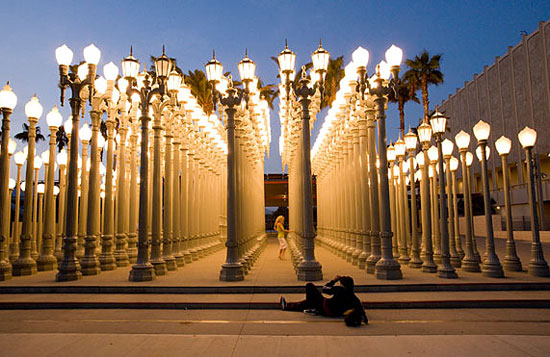
"Urban Light" won't be on the only LACMA artwork visible from Wilshire if a new architectural plan is adopted.
An architectural reimagining of the Los Angeles County Museum of Art is being unveiled next month—and transparency, in every sense of the word, is on the table.
Pritzker Prize-winning architect Peter Zumthor, who has been working on the plan with LACMA director Michael Govan, envisions a design that would open the museum up to its surroundings, making it possible for passersby to view works of art, and even traditionally closed-door activities like the installation of exhibitions, without entering the museum.
“Visitors can look out; those outside can look in. From the ground, and in elevation, the museum is mostly transparent,” the Swiss architect said in a statement. Zumthor described his idea for the museum as “an organic shape, like a water lily, floating and open with 360 degrees of glass facing Hancock Park, the La Brea Tar Pits, Wilshire Boulevard, Chris Burden’s Urban Light, and Renzo Piano’s new galleries.”
A model of Zumthor’s proposed design—along with other images from LACMA and its site stretching back to the Pleistocene Era—will be on display at the museum from June 9 through September 15. The exhibition, “The Presence of the Past: Peter Zumthor Reconsiders LACMA,” is part of the modern architecture spinoff of the Getty-funded Pacific Standard Time initiative.
Although the project is in the preliminary stages, museum officials said they hope to engage the public early in a conversation about LACMA’s evolution.
Beyond the aesthetics, one aim of the project is to make the museum completely solar-powered, with energy left over to share.
“A huge roof covered in solar tiles literally soaks up the energy of the California sun,” Zumthor said in his statement. “The building gives more energy back to its neighbors than it takes from the city.”
Creating the new LACMA would mean replacing some of the museum’s existing buildings by William Pereira, which are aging and in need of repair.
The Renzo Piano-designed Broad Contemporary Art Museum and Resnick Pavilion would not be affected, and neither would a new motion picture museum that Piano and Zoltan Pali are designing for the May Co. building on the site.
It’s not the first time the museum has sought to remake itself in recent years. Rem Koolhaas, the Dutch architect, had proposed a similarly ambitious makeover but that project, approved by LACMA’s board in 2001, was tabled before it came to fruition.
Details of the current project under consideration were first reported in the Wall Street Journal and Los Angeles Times.
Posted 5/3/13




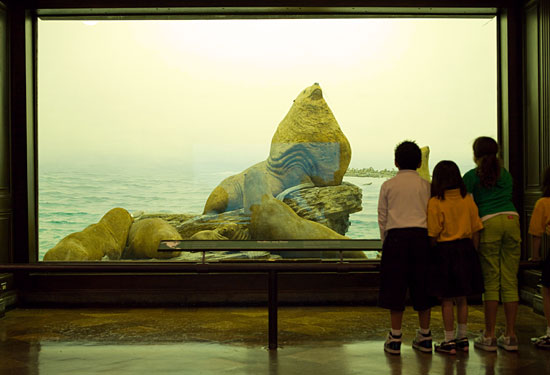
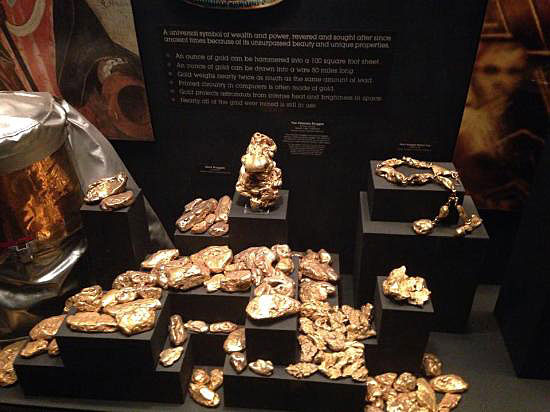
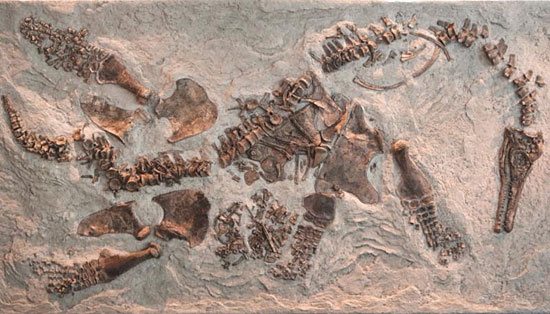
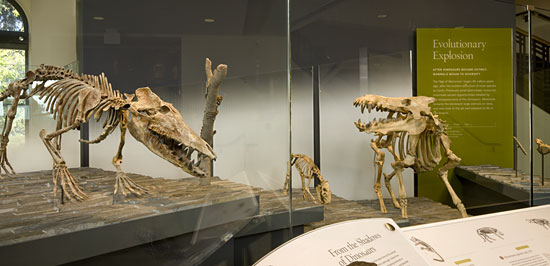
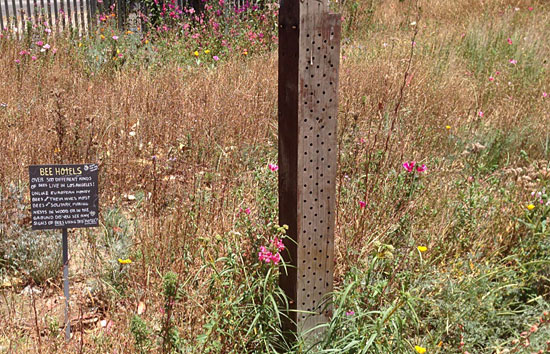
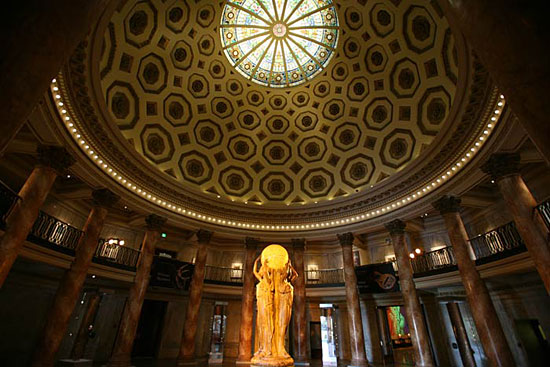
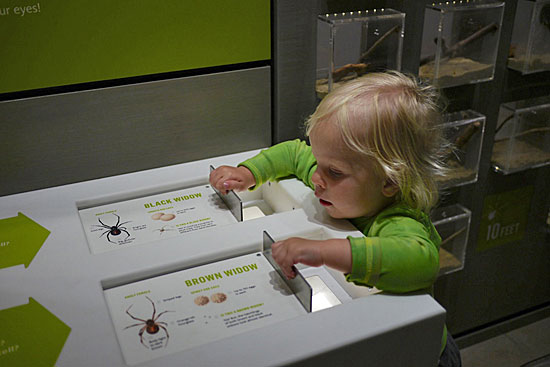
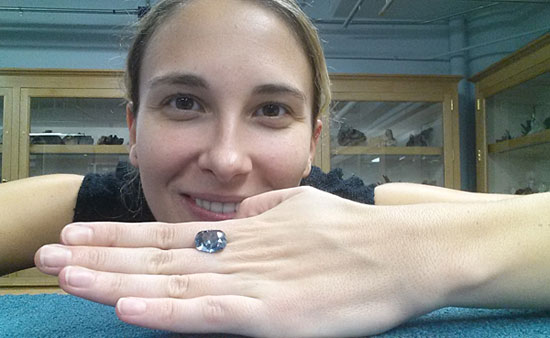
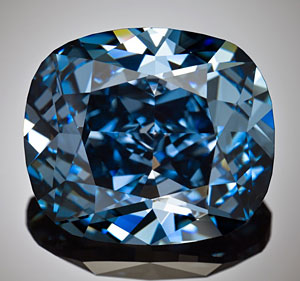


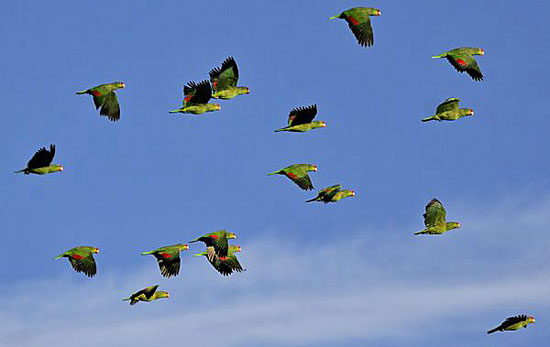
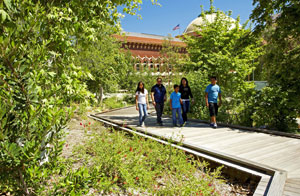
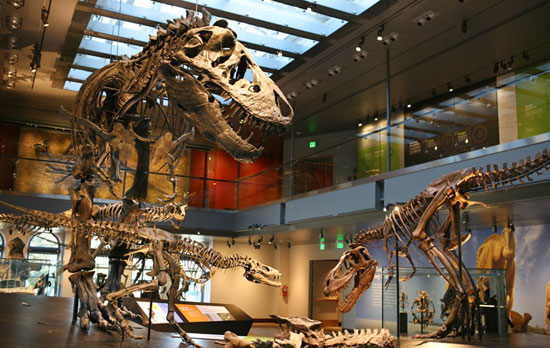
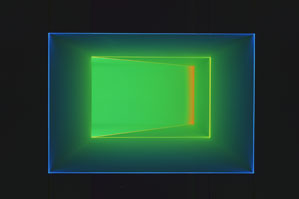
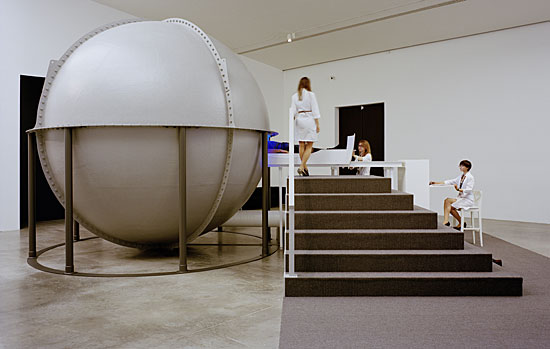

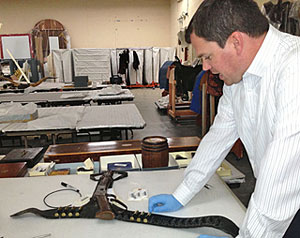









 405 bridge work causes a stink
405 bridge work causes a stink